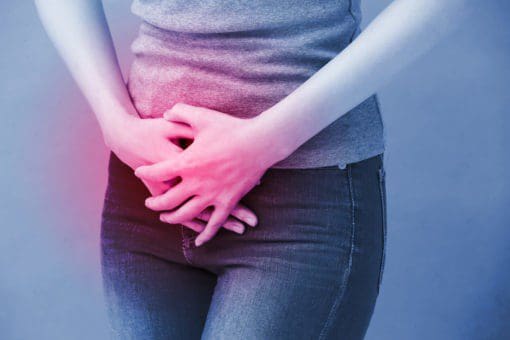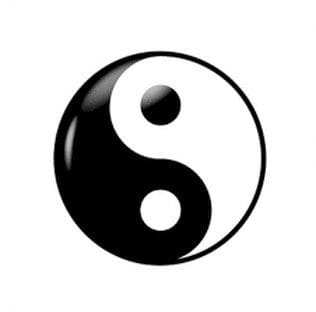The Menstrual Cycle According to Traditional Chinese Medicine
Traditional Chinese Medicine (TCM) has a very fascinating way of looking at the menstrual cycle. It is a view that is guided by nature, Daoist principles and yin/yang theory. These principles are based on eating and living according to the rhythms of the seasons and your body’s own unique qualities, which leads to greater health and balance. By being mindful of how your cycle’s rhythms mirror the ebb and flow of the natural world, you can achieve a deeper, more intuitive understanding of your body.

It is important to understand a little about yin/yang theory; what it looks like in nature and how it affects our everyday lives.

Yin and yang are opposites, and they cannot exist without each other. They are constantly transforming from one to the other. For example, Spring represents the gradual transition from Yin to Yang, as does a person when going from sleeping to waking. The menstrual cycle has times of Yin and Yang, which change with the constant fluctuations of hormones.
Below, are outlined the four phases of the cycle with useful lifestyle tips to help manage them:
PHASE 1: DAY 1-5 (MENSTRUATION)
- The uterine lining (endometrium) discharges from the body, and the pituitary gland begins making follicle stimulating hormone (FSH) and luteinising hormone (LH) to stimulate growth of new follicles (eggs).
- In Chinese Medicine, the focus is on invigorating the flow of “qi” and blood to ensure the lining can fully slough off. This also helps with reducing cramping (which can be a sign of stagnant blood). Acupuncture can promote movement of stagnant qi and blood.
- Lifestyle: Your energy is focused inward; there tends to be more dreaming. Increasing rest and spending time alone or with people you love, and decreasing extracurricular activities are recommended. Gentle exercise only.
- Foods: comfort foods such as stews, casseroles, whole grains and root vegetables.
PHASE 2: FOLLICULAR PHASE (DAY 6 TO PRE-OVULATION, DAY 14)
- One of the follicles becomes dominant and begins to produce more estrogen. This causes the uterine lining to thicken and cervical fluid to increase.
- In Chinese Medicine, the focus is on building yin, which corresponds to the blood and tissue in the uterine lining. However, there is also a yang aspect i.e. the growth of the dominant follicle.
- Lifestyle: Women tend to feel more outgoing, happy and have increased creativity in this phase. This time of the month is best for vigorous exercise, new projects, being extroverted and having sex.
- Foods: Protein-rich foods are recommended in order to build yin and blood. Beans, fish, eggs and meat are all good choices. Cooked leafy greens and shellfish such as mussels or oysters are excellent in the early part of this phase to replenish the yin of the body after bleeding.
PHASE 3: OVULATION
- Increased levels of LH trigger the release of the egg from the dominant follicle. Fertile cervical mucus (sometimes having an egg-white consistency) increases and the cervix is open.
- In Chinese Medicine, this is when yin energy is at its peak and yang energy begins to rise. This is when the body transforms from yin dominance (just before ovulation) to yang dominance (just after ovulation).
- Lifestyle: Verbal skills are at their peak- verbalise your thoughts and feelings, engage in creative activities.
- Foods: lighter foods such as fish, quinoa and salads. In general, Chinese Medicine recommends avoiding too many raw foods since they have a cold nature and can be difficult to digest, but if you eat some raw foods together with cooked foods this is more balanced. For example, have a salad with cooked asparagus or pumpkin, whole grains and a protein such as chicken or beef.
PHASE 4: LUTEAL PHASE (POST-OVULATION, DAY 14-28)
- The corpus luteum (the “shell” of the dominant follicle from which the egg was released) begins to secrete progesterone, further changing the uterine lining and causing your body temperature to be consistently higher. The egg travels down the fallopian tube into the uterus. If the egg has been fertilised, implantation occurs.
- In Chinese Medicine, this is when yang energy is at its peak, evidenced by the higher basal body temperature. If pregnant, there is a lot of energy and movement required for rapid cell division and growth of the recently implanted embryo. If not pregnant, little is going on with the uterine lining (stillness=yin) and in the few days before menstruation begins, women often report their mood is more withdrawn and they feel less social.
- Lifestyle: Feeling more introverted, intuitive. Premenstrual symptoms such as irritability or crying easily are your body’s clues to slow down. Decrease vigorous exercise, get a massage, relax.
- Foods: Warming foods help to support the warm, yang energy. Increase protein intake again, cooked vegetables, brown rice. Some women have found that limiting meat consumption during this time can reduce menstrual cramps.
Please feel free to call Zoe to discuss any menstrual problems you might have. Many have benefited from short courses of acupuncture.
0408 319 730
Or to book online go to https://www.fiveelementsacupuncture.com.au/book-online/
